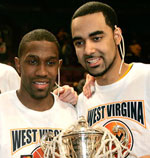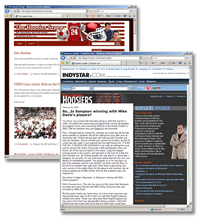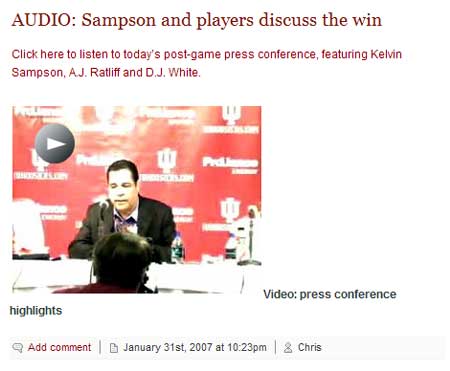It seems pretty clear that the NCAA wants to prohibit anything approaching real-time coverage of the event. Companies –like the one I work for— pay millions for the exclusive broadcast rights to collegiate sporting events. A reporter (or a dozen reporters) up in the press box live blogging the game –in theory– dilutes the value of the rights we purchased.
“The NCAA this week announced a formal program limiting how often bloggers with media credentials can update their blog while attending championship college events.
The sports governing body set blogging limits for each sport. For example, those at football games can update their blogs three times per quarter and once at halftime. For basketball, bloggers can post five times per half, once at halftime and twice per overtime period.
The policy even sets rules for water polo (three per quarter, once at halftime), bowling (10 blog posts per session) and fencing (10 per session).”
The phrase that caught my eye was “bloggers with media credentials.” If
I’m just a fan, can I blog at will? If your credentials are at stake,
you probably wouldn’t fight this. But if you’re a civilian, you could
tell the NCAA to piss off. Does this mean the NCAA thinks only bloggers
with some media connection can/will have a significant audience?

 The “West Virginia” printed on the shirts players wore after winning the NIT title with a 78-73 victory over Clemson on Thursday night is missing the last “i” in “Virginia.” WVU sports information director Shelly Poe said the NIT printed the shirts.
The “West Virginia” printed on the shirts players wore after winning the NIT title with a 78-73 victory over Clemson on Thursday night is missing the last “i” in “Virginia.” WVU sports information director Shelly Poe said the NIT printed the shirts. It was brought to my attention today that a couple of Indianapolis newspapers –The Herald-Times and The Indianapolis Star– were blogging about the Hoosiers. Hoosiers Insider and the Hoosier Scoop are pretty typical for newspaper blogs.
It was brought to my attention today that a couple of Indianapolis newspapers –The Herald-Times and The Indianapolis Star– were blogging about the Hoosiers. Hoosiers Insider and the Hoosier Scoop are pretty typical for newspaper blogs.